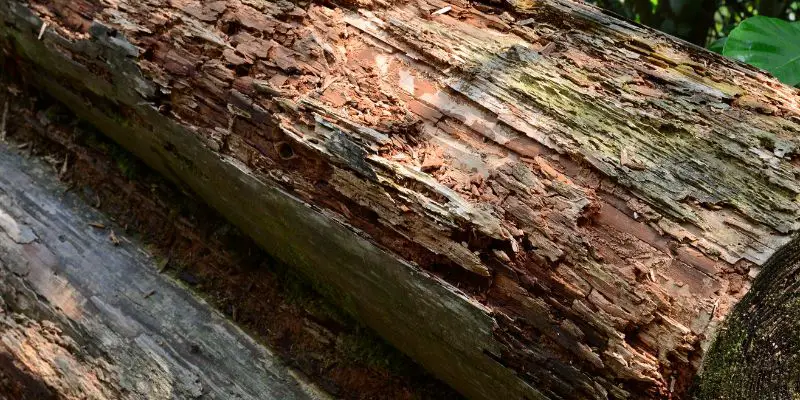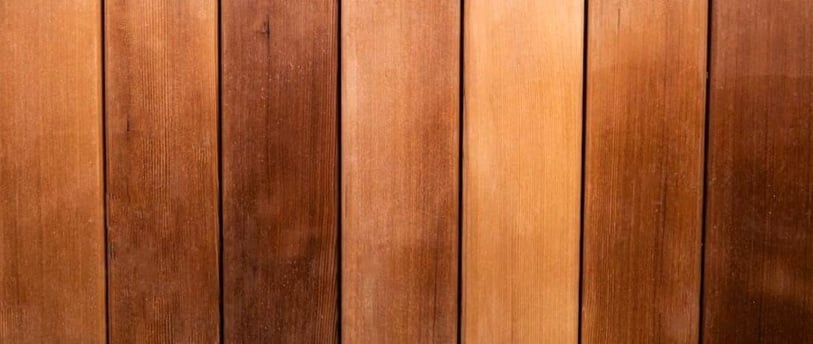No, hemlock is not rot resistant. Hemlock is susceptible to rot due to its porous nature and high moisture content.
It requires regular maintenance to prevent decay and prolong its lifespan. Hemlock, although a popular choice for outdoor applications such as decking and fencing, is not rot-resistant. Due to its porous nature and high moisture content, hemlock is prone to rot and decay over time.
This means that if left untreated or not properly maintained, hemlock can deteriorate quickly, compromising its structural integrity. Regular maintenance, such as sealing or treating the wood, is essential to prevent rot and extend the lifespan of hemlock products. While hemlock may be a visually appealing option, it is important to be aware of its susceptibility to rot and take necessary precautions for its longevity.
The Truth About Hemlock Rot Resistance
Discover the truth about the natural rot resistance of Hemlock. This timber boasts impressive rot resistance, making it a popular choice for outdoor and construction projects. Its durability and natural resistance to decay make it a reliable option for various applications.
Hemlock wood is often praised for its durability and natural resistance to rot. However, there are certain misconceptions floating around regarding its rot resistance properties. In this article, we will delve deep into the truth about hemlock rot resistance to clear any confusion and provide you with accurate information. Let’s start by exploring the properties of hemlock wood.
The Properties Of Hemlock Wood
Hemlock wood, scientifically known as Tsuga, is a popular choice for various construction and woodworking applications. It is highly valued for its strength, stability, and attractive appearance. However, contrary to popular belief, hemlock wood is not naturally rot-resistant like some other wood species, such as cedar or redwood.
While hemlock does contain certain natural compounds that offer some level of protection against decay, it is not inherently immune to rot. In fact, untreated hemlock wood is susceptible to rot, especially when exposed to moisture or in contact with the ground. This is because hemlock contains a higher amount of sapwood, which tends to absorb and retain moisture, making it more prone to rotting.
To enhance the rot resistance of hemlock wood, it is recommended to apply appropriate finishing treatments or preservatives. Proper treatment and maintenance play a vital role in extending the lifespan and durability of hemlock wood structures.
Common Misconceptions About Hemlock Rot Resistance
Misconception 1: Hemlock wood is naturally rot-resistant.
While hemlock does possess some natural characteristics that provide limited protection against decay, it is not entirely rot-resistant. Without proper treatment and preventive measures, hemlock wood can still succumb to rotting when exposed to the elements.
Misconception 2: Hemlock wood can be used for outdoor projects without protective finishes.
Some people believe that hemlock wood can be used in outdoor projects without any protective finishes or preservatives, under the assumption that it is naturally rot-resistant. However, this misconception can lead to premature rotting and deterioration of the wood. Applying appropriate finishes and preservatives is crucial to enhance its resistance to rot.
Misconception 3: All hemlock wood is created equal in terms of rot resistance.
Not all hemlock wood is created equal when it comes to rot resistance. Different subspecies and variations of hemlock wood may exhibit varying levels of natural rot resistance. It is important to choose the right type of hemlock wood and apply suitable treatments to ensure optimal rot resistance.
In conclusion, while hemlock wood possesses certain natural properties that offer some protection against decay, it is not entirely rot-resistant on its own. Proper treatment, maintenance, and the use of suitable protective finishes or preservatives are essential to maximize the rot resistance of hemlock wood. Understanding the truth about hemlock rot resistance will help you make informed decisions when using this wood species for your projects.

Factors Affecting Hemlock Rot Resistance
Hemlock rot resistance is influenced by various factors such as tree age, tree species, and environmental conditions. These factors play a significant role in determining the level of resistance to rot in hemlock trees.
Hemlock wood, known for its strength and durability, is a popular choice for construction projects and outdoor applications. However, its susceptibility to rot can be a concern for many. Understanding the factors that affect hemlock rot resistance can help you make informed decisions about its usage.
Natural Characteristics of Hemlock Wood
The natural characteristics of hemlock wood play a crucial role in its resistance to rot. Hemlock contains natural oils and resins that provide some level of protection against decay-causing organisms. These oils and resins act as a barrier, preventing moisture from penetrating the wood and accelerating rot. Moreover, the tight grain structure of hemlock wood helps to enhance its rot resistance by reducing the amount of water absorption.
Environmental Conditions and Treatment Methods
While the natural characteristics of hemlock wood provide some level of rot resistance, environmental conditions and treatment methods also play significant roles.
1. Environmental Conditions:
– Moisture content: High moisture content in the surrounding environment increases the likelihood of rot in hemlock wood. Proper moisture management, such as ensuring proper ventilation and avoiding direct contact with water, can help maintain its rot resistance.
– Temperature: Extreme temperature fluctuations can cause expansion and contraction in the wood, leading to cracks and openings. These openings provide entry points for rot-causing organisms. Stabilizing the temperature can help maintain the wood’s integrity.
2. Treatment Methods:
– Chemical treatment: Applying preservatives and biocides can significantly enhance hemlock’s rot resistance. These treatments penetrate the wood, protecting it against decay-causing organisms. Consult professionals for appropriate treatment methods and products.
– Sealants and finishes: Using sealants and finishes can provide an additional layer of protection to hemlock wood, preventing moisture infiltration and reducing the risk of rot.
It is important to note that while hemlock wood possesses some natural rot resistance, no wood is completely immune to decay. Regular inspections and maintenance are essential to identify and mitigate potential rot issues. Consider consulting a professional to ensure proper usage and maintenance of hemlock wood in your projects.
Remember, understanding the factors that affect hemlock rot resistance allows you to make informed decisions about its usage and take necessary measures to prolong its lifespan.
Comparing Hemlock With Other Rot-resistant Woods
When it comes to choosing the right wood for outdoor applications, rot resistance is a crucial consideration. Hemlock is often touted for its rot-resistant properties, making it a popular choice for outdoor projects. In this section, we’ll explore the strengths and weaknesses of hemlock, and compare it with two other rot-resistant woods, cedar and redwood. Let’s delve into how hemlock stacks up against these popular choices.
Strengths And Weaknesses Of Hemlock
Hemlock is valued for its natural resistance to rot, decay, and insect infestation, making it an excellent choice for outdoor use. Its dense grain and high resin content contribute to its durability, allowing it to withstand the elements and maintain its structural integrity over time.
However, hemlock is prone to cracking and splintering, especially if not properly treated or maintained. It also has a lower natural resistance compared to cedar and redwood, which may require additional protective treatments for prolonged longevity.
How Hemlock Stacks Up Against Cedar And Redwood
When comparing hemlock with cedar and redwood, we find that all three woods offer varying degrees of rot resistance, but with distinct differences.
| Hemlock | Cedar | Redwood | |
|---|---|---|---|
| Rot Resistance | Good | Excellent | Excellent |
| Strength | Moderate | High | High |
| Maintenance | Requires regular maintenance | Low maintenance | Low maintenance |
While hemlock offers good rot resistance, cedar, and redwood surpass it with excellent rot resistance. Cedar and redwood also exhibit higher natural strength and require relatively less maintenance compared to hemlock.
Preserving Hemlock’s Rot Resistance
Preserving the natural rot resistance of hemlock wood is crucial for its longevity. By implementing proper sealing and finishing techniques, as well as following our maintenance tips, you can ensure that your hemlock wood remains strong and resistant to rot for many years. Let’s explore these techniques and tips in detail:
Sealing And Finishing Techniques
Sealing and finishing your hemlock wood properly not only enhances its aesthetic appeal but also helps protect it from moisture, insects, and decay. Consider the following techniques:
- Use a high-quality wood sealer: Apply a suitable wood sealer to create a protective barrier against water and prevent the growth of mold and mildew.
- Apply multiple coats: For optimal protection, apply multiple coats of wood sealer, allowing each coat to dry completely before applying the next one.
- Consider a wood stain: To further enhance the look of your hemlock wood and protect it from UV damage, consider applying a wood stain that is formulated for outdoor use.
- Regularly inspect and reapply: Over time, the protective coating may wear off. Regularly inspect your hemlock wood and reapply the sealer or finish as needed.
Maintenance Tips For Long-lasting Hemlock Wood
To ensure your hemlock wood retains its rot resistance and remains in great condition, follow these maintenance tips:
- Regular cleaning: Remove dirt, debris, and organic matter from the surface of your hemlock wood periodically to prevent moisture accumulation and reduce the risk of rot.
- Avoid moisture exposure: Hemlock wood performs best in dry conditions. Ensure proper drainage around the wood and avoid prolonged exposure to standing water or excessive humidity.
- Check for signs of decay: Routinely inspect your hemlock wood for any signs of rot or decay, such as soft spots, discolored patches, or fungal growth. Promptly address any issues to prevent further damage.
- Trim vegetation: Keep plants, shrubs, and trees away from direct contact with your hemlock wood. Trimming vegetation reduces the risk of moisture retention and potential damage from rubbing or scratching.
- Apply a protective sealant regularly: Reapply a wood sealer or finish every few years to maintain the protective barrier and prolong the rot resistance of your hemlock wood.
By following these sealing, finishing, and maintenance techniques, you can preserve the rot resistance of your hemlock wood, ensuring its longevity and enhancing its beauty. Take good care of your hemlock wood, and it will reward you with its durability and natural charm for years to come.
Best Uses For Hemlock In Construction And Woodworking
Hemlock, a popular wood species known for its beautiful appearance and versatility, has a wide range of applications in construction and woodworking. Due to its unique properties, hemlock can be used in various structural, decorative, and outdoor projects, making it a sought-after choice for many professionals in the industry.
Structural Applications
When it comes to structural applications, hemlock proves to be a reliable and durable option. Its strength and stability make it suitable for load-bearing structures in buildings, such as beams, joists, and posts. Additionally, hemlock’s rot resistance ensures longevity, making it a favored choice for construction projects that require enduring elements.
Decorative And Outdoor Uses
Not limited to structural purposes, hemlock also excels in decorative and outdoor applications. Its attractive grain pattern and warm color make it a popular choice for a range of interior projects, including flooring, paneling, and cabinetry. Furthermore, hemlock is frequently used in exterior projects such as siding, trim, and decks due to its natural resistance to weathering and decay.

Credit: www.mataverdedecking.com
Frequently Asked Questions On Is Hemlock Rot Resistant
How Long Does Hemlock Wood Last Outside?
Hemlock wood typically lasts around 10-15 years when used outside. It’s important to treat the wood and properly maintain it to prolong its lifespan.
Is Hemlock Good For Outdoor Use?
Yes, hemlock is suitable for outdoor use due to its natural resistance to decay and insects. It is commonly used for outdoor furniture, decking, and fencing, making it a popular choice for outdoor projects.
What’s The Most Rot Resistant Wood?
Cedar is the most rot-resistant wood due to its natural oils that protect it from decay. It is a popular choice for outdoor projects like decks and fences, as well as for furniture and siding.
Is Hemlock Weatherproof?
Yes, hemlock is weatherproof, meaning it can withstand various weather conditions without being damaged. Hemlock wood is often used for outdoor applications like decking or siding due to its natural ability to resist moisture, decay, and insect infestation.
Conclusion
Hemlock’s natural rot resistance makes it a popular choice for outdoor applications. Its strength and durability in various weather conditions make it an ideal material for construction projects. With proper maintenance, Hemlock can withstand rot for many years, offering a sustainable and dependable option for outdoor use.


